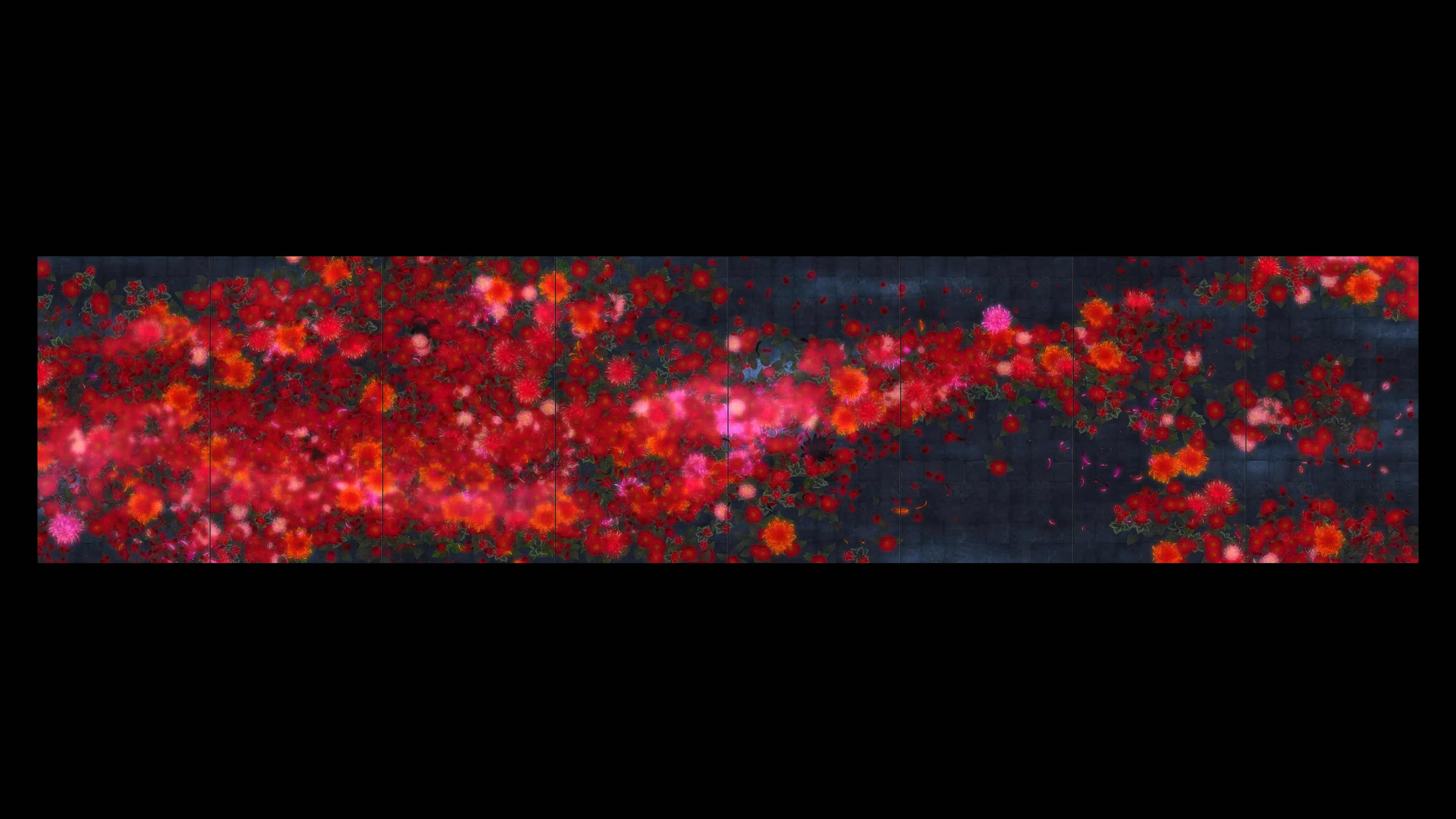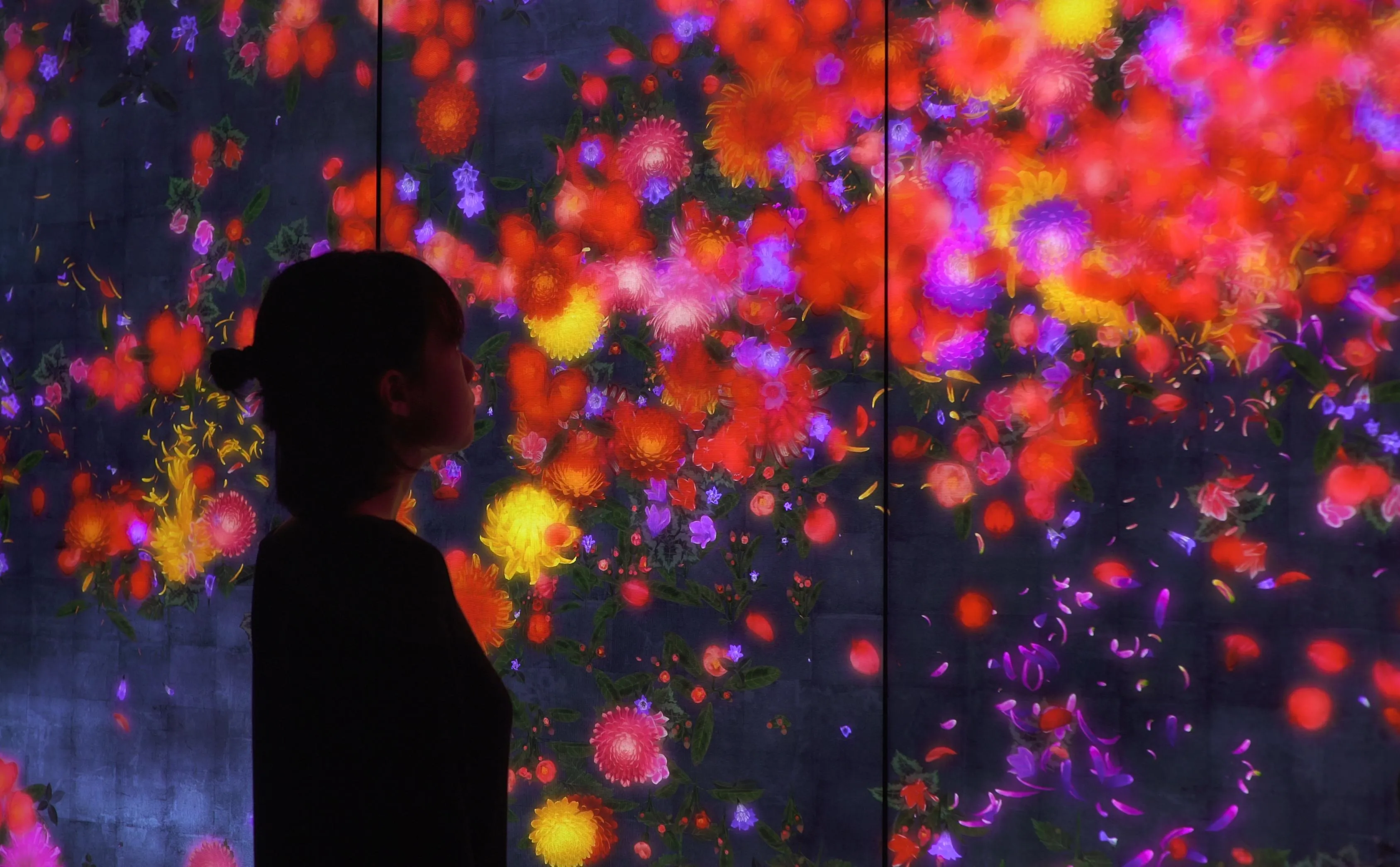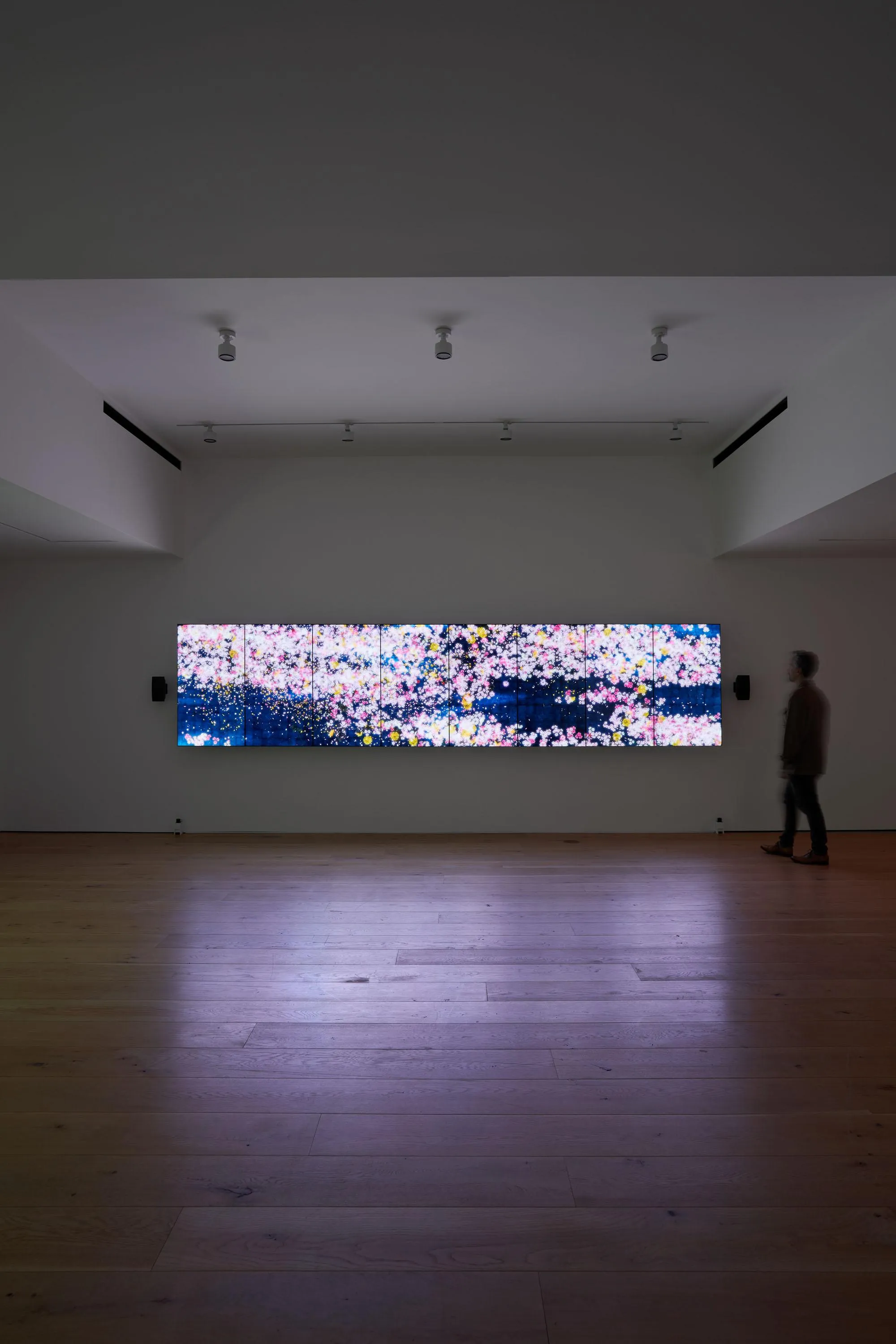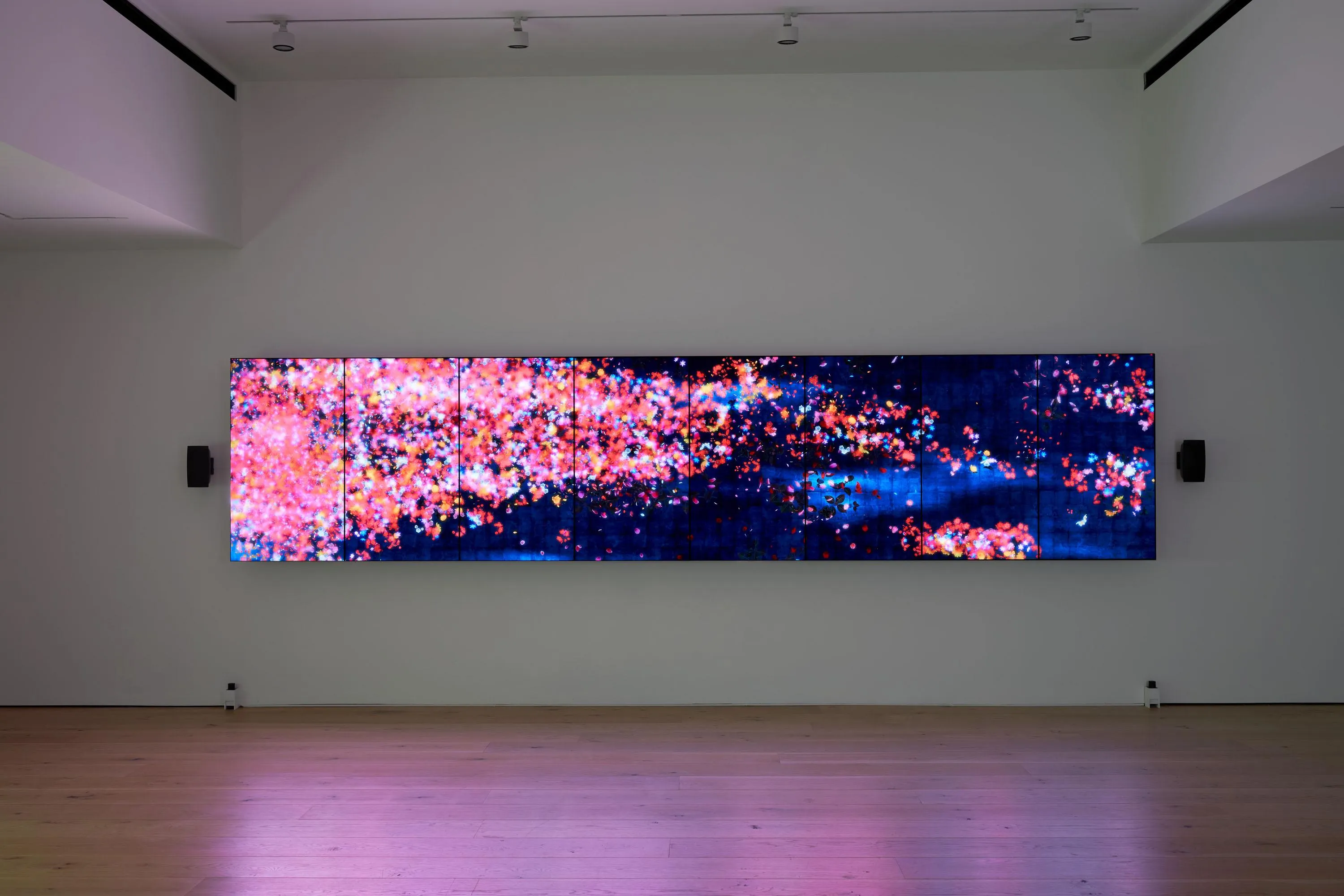Flowers and People − A Whole Year per Hour
teamLab, 2020, Interactive Digital Work, 8 channels, Endless, Sound: Hideaki Takahashi

Flowers and People − A Whole Year per Hour
teamLab, 2020, Interactive Digital Work, 8 channels, Endless, Sound: Hideaki Takahashi
A year’s worth of seasonal flowers bloom over the course of an hour, continuously scattering and changing.
Flowers are born, bloom, then in the course of time, they wither and die. The flowers are eternally repeating the process of life and death. When people move in front of the artwork, the flowers scatter all at once. But when people stand still, flowers bloom and grow more abundantly.
The artwork is not a pre-recorded image that is played back: it is created by a computer program that continuously renders the work in real time. The interaction between people and the installation causes continuous change in the artwork: previous visual states can never be replicated, and will never reoccur. The picture at this moment can never be seen again.
In spring in the Kunisaki Peninsula, there are many cherry blossoms in the mountains and canola blossoms at their base. This experience of nature caused teamLab to wonder how many of these flowers were planted by people and how many were native to the environment. It is a place of great serenity and contentment, but the expansive body of flowers is an ecosystem influenced by human intervention, and the boundary between the work of nature and the work of humans is unclear. Rather than nature and humans being in conflict, a healthy ecosystem is one that includes people. In the past, people understood that they could not grasp nature in its entirety, and that it is not possible to control nature. People lived more closely aligned to the rules of nature that created a comfortable natural environment. We believe that these valleys hold faint traces of this premodern relationship with nature that once existed, and we hope to explore a form of human intervention based on the premise that nature cannot be controlled.
Flowers are born, bloom, then in the course of time, they wither and die. The flowers are eternally repeating the process of life and death. When people move in front of the artwork, the flowers scatter all at once. But when people stand still, flowers bloom and grow more abundantly.
The artwork is not a pre-recorded image that is played back: it is created by a computer program that continuously renders the work in real time. The interaction between people and the installation causes continuous change in the artwork: previous visual states can never be replicated, and will never reoccur. The picture at this moment can never be seen again.
In spring in the Kunisaki Peninsula, there are many cherry blossoms in the mountains and canola blossoms at their base. This experience of nature caused teamLab to wonder how many of these flowers were planted by people and how many were native to the environment. It is a place of great serenity and contentment, but the expansive body of flowers is an ecosystem influenced by human intervention, and the boundary between the work of nature and the work of humans is unclear. Rather than nature and humans being in conflict, a healthy ecosystem is one that includes people. In the past, people understood that they could not grasp nature in its entirety, and that it is not possible to control nature. People lived more closely aligned to the rules of nature that created a comfortable natural environment. We believe that these valleys hold faint traces of this premodern relationship with nature that once existed, and we hope to explore a form of human intervention based on the premise that nature cannot be controlled.




